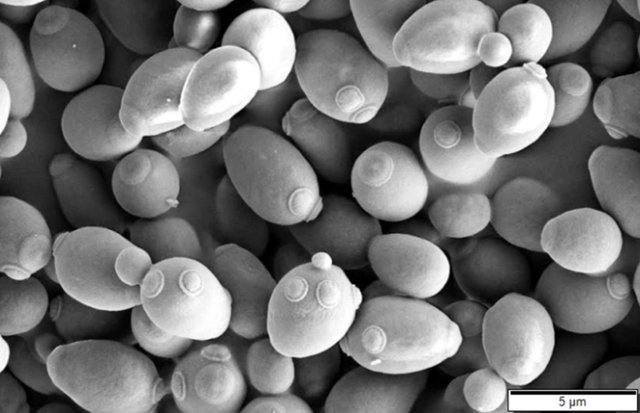The Foundation of Molecular Biology: Plasmid DNA
I found that the blog post about plasmids that I had outlined in my head had been written already on a website called Addgene. The beginning of the Addgene post echoes many of the points that I made in the “Why work with Escherichia coli (E. coli)?” post.
.jpg)
Image: Escherichia coli – scanning electron micrograph from Wikimedia Commons
Here, I will paraphrase and throw in my two cents for the “plasmid elements” table:
Origin of Replication (ORI) – Genetic element with low melting temperature (high percentage of adenine-thymine base pairs that use only two hydrogen bonds). When the bacterial DNA replication machinery gets recruited to this element, the strands can be separated and replication forks will proceed in one or both directions from the ORI.
Antibiotic Resistance Gene – During the bacterial transformation process, not all bacteria will take up the plasmid DNA you mix them with. How do you separate the bacteria that successfully take up DNA versus those that don’t? The inclusion of an antibiotic resistance gene in the plasmid DNA will make the successfully-transformed bacteria capable of growing in the presence of an antibiotic.
Multiple Cloning Site (MCS) – The MCS is an area of the plasmid that is loaded with restriction enzyme recognition sites. Most, if not all, of these restriction sites are “unique”. That is, these unique restriction sites are only found once in the entire sequence of that plasmid.
Insert – As plasmids are constructed, the new piece of DNA is called the insert, whereas the original plasmid DNA is called the vector. Inserts may add new functional DNA to a plasmid to create ever-increasing complex plasmids. However, in day-to-day molecular biology work the insert is often a gene from another organism that the scientist wants the model organism to “express”, where expression typically means that the model organism reads the DNA and makes a protein from it.
Selectable Marker – Often in the form of resistance to an antibiotic, the selectable marker allows the cell(s) that take up the DNA to live in conditions that would otherwise cause it to die. The protein encoded by the selectable marker could alternatively provide a way for the organism to live by providing an enzyme in a metabolic pathway such as for an essential amino acid. The antibiotic resistance gene is common in plasmids that are taken up by bacteria such as E. coli. In contrast, the genes encoding metabolic enzymes are often used in yeast such as bakers’ yeast, Sacchromyces cerevisiae.

Image: Sacchromyces cerevisiae (a type of budding yeast also known as bakers yeast)- scanning electron micrograph from Wikimedia Commons
Reference
https://www.addgene.org/mol-bio-reference/plasmid-background/
https://steemit.com/steemstem/@lifeandbiology/why-work-with-escherichia-coli
Your post is looking very lonely and unrecognized. I remember how much that sucks. Have an upvote and a resteem for more visibility.
This is the better way of motivating people....
Well @lifeandbiology I would suggest to elaborate more on the topic you choose.
Thanks for the feedback. I was breaking the subjects down into small pieces because I use these blogs as reading assignments in my freshman biology courses. With your suggestions, I will string several topics together for Steemit audiences but keep them "bite-sized" on my stand-alone website.
Congratulations @lifeandbiology! You received a personal award!
Click here to view your Board of Honor
Congratulations @lifeandbiology! You received a personal award!
You can view your badges on your Steem Board and compare to others on the Steem Ranking
Vote for @Steemitboard as a witness to get one more award and increased upvotes!